Company advantages
Our certificate
Bonzer Pet quality management system has been certified by ISO9001:2000 and ISO9001:2008 as well as the national military standard GJB9001-2001A.
Competitive Price
We offering a higher-quality product or service at an equivalent price. As a result we have a growing and loyal customer base.
Customized Services
We understand that each customer has unique manufacturing needs. That's why we offer customization options to cater to your specific requirements.
24h Online Service
We try and respond to all concerns within 24 hours and our teams are always at your disposal in case of any emergencies.across borders.
What is Pet Door
A pet door or pet flap (also referred to in more specific terms, such as cat flap, cat door, kitty door, dog flap, dog door, or doggy/doggie door) is a small opening to allow pets to enter and exit a building on their own without needing a human to open the door. Originally simple holes, the modern form is a hinged and often spring-loaded panel or flexible flap, and some are electronically controlled. They offer a degree of protection against wind, rain, and larger-bodied intruders entering the dwelling. Similar hatches can let dogs through fences at stiles. A related concept is the pet gate, which is easy for humans to open but acts as a secure pet barrier.
Benefits of Pet Door
Pet doors give your pets more freedom
Most pets love to run around the garden, roll around on the grass or just bask in the sunshine. With a handy pet door installed, they can move around and get back in as they please without disturbing you. Gone are the days of leaving the door open or the constant up and down to let your furry family members in and out.
Pet doors encourage your pets to be more active
Allowing your pet to enter and leave as they please will help them stay stimulated and not get bored if they are home all day by themselves. Whether it's a door into their cat enclosure or a door to the backyard, having additional space for your pet to come and go can help add to the daily exercise they need and the enrichment to keep them happy.
Pet doors help with toilet training and avoiding indoor accidents
One of the major concerns for pets and homeowners are the little accidents that can happen inside the house. Unfortunately, if your pet can't get out to the grass, indoor accidents can occur. And when they are young, this can be an arduous task of taking them out many times a day! So, giving pets easy access to the outside allows them to relieve themselves at their (and your) convenience.
Pet doors can reduce your worry
If you're running around with a busy schedule, you may sometimes forget that your cat or dog is still inside as you head out or they may be outside as you turn in for the night. With a pet door, they can let themselves in whenever it starts to rain or if it gets too hot outside, so they can be safe in the comfort of your home.
It's good for the fur parent, too
Having a pet door will save you the time and frustration of having to open and close the door for your pet all day long, not to mention saving on energy costs if you have a heating or cooling system running.
Types of Pet Door
Traditional Flap
Everyone has seen a traditional flap pet door - it's a classic! They are durable and easy for your pet to use. They also can be used on interior doors in your home. There are concerns pertaining to intruders but if the traditional flap is installed leading into a garage or locked patio, you should be fine.
Hard Plastic Lock
Hard plastic doors come with an added locking feature that will prohibit use of the pet door. There is a slot on the inside of the pet door where you can slide the lock which is a plastic cover. This will prevent wild animals or intruders from entering your home. Unfortunately, this also means your pet using the door as well. If you're interested in the hard plastic lock, its best to use it when you're sleeping. While is does take away a little bit of your pet's freedom, your home is safe for the six-eight hours you are asleep.
Magnetic/Electric Door
Magnetic or electric doors work with your pet's collar. They will only open if your pet is wearing the collar and attempts to go through. This will prevent any other animals from getting into your home, but they're more expensive than traditional doors. It might be more difficult to train a pet to use the magnetic door because they can only use the door with the collar.
Pet Door Sizing and Measurement
Measure the Height
Measuring the height of your pet is simple. The height will be used to determine how high you can install the pet door. Grab a tape measure and measure from the ground to the tallest point of your pet's back. We suggest adding an inch or two to this measurement just to be safe.
Measure the width of your pet
The width will be used to determine the width of the flap that you will purchase. All you need to do is open a door wide enough so that your pet can walk through comfortably. Once your pet walks through, measure that width of the opening and add an inch or two for safety.
Measuring the Step-Over / Rise
The step over or “rise” is the measurement from the bottom of your door or wall to the base of the pet door. This is basically the height that your pet must step over in order to get through the door. Please note that this measurement should be factored in with the pet's height you measured earlier when choosing an appropriate pet door height. With step overs, the lower they are, the easier it is for the pet to get through. For dogs with health issues such as arthritis or are of old age, it is recommended that you have a small step over.
Measuring Your Door or Walls
Besides measuring your pet, you also have to measure your door or wall when installing a pet door. There are two measurements you must take into consideration: the rough opening size and the outer frame size. The rough opening size is the actual size of the hole that you will be cutting into your door or wall. Generally the inner frame of the pet door will fit in there. The outer frame measurement is the measurement of the outer framing of the pet door that's usually a couple inches larger. For tight spaces, this outer frame measurement is important to know.
How to Choose Pet Door
Location, location, location
One of the first things to consider when deciding where you plan to install a dog door is the material and size, as well as safety. You need a dog door that is not only easy for your dog to get in and out of but a door that causes minimal hassle and that can be opened and closed at will. Also an entry and exit point that your dog is used to may be better than trying to teach an “old dog, new tricks”.Doors can be installed into garage doors, sliding doors or walls, and choosing the right place is key to installation costs as well as your pet's comfort. For dogs that are mostly outdoors, opt for a garage door to allow for indoor space when it's cold, while inside dogs may need a door with quick and easy access directly to the garden.
Measure dog and installation Location before purchase
Once you have decided where you would like your doggie door, it's important to make sure that dog door itself will be comfortable for your dog to use. The best way to do this is to weigh your dog and measure it's width at its widest part-around the shoulders, just below the neck, or across the widest part of the head, making sure that the door is not only wide enough to fit, but durable enough to withstand his weight.Roughly dogs up to 7 kg only require a small doggy door while dogs up to 45 Kgs will need a large or extra-large door, alternatively opt for an adjustable latch which gives you more flexibility as a pet grows.
Price and Installation Costs matter
Price is a very important consideration, as some doors, like wall flaps will cost a lot more to install than a door latch. How easy the doggy door is to install is also a budgetary factor, as more complicated doors will require professional installation which will ultimately add to the costs of the doggy door.
Temperature and weather considerations
How well a dog door seals from heat or the winter cold is a big consideration. Having a door that allows that winter chill seep in may result in you needing to lock the door closed overnight. Other temperature considerations to think about is if the door will be subject to direct summer sun, which can warp the plastic and make your doggy door less durable and therefore makes the material of your dog door very important. If you're looking for the best solution for temperate climates, choose a door latch to ensure those summer breezes while offering more open-close flexibility in the winter.
One Size does not fit all
Not only is it important to choose the right doggy door for your current pet, but it's important to consider if your pet family will be growing in the future. By choosing a dog door that fits your largest pet, or using more flexible options like an adjustable door latch will ensure that you do not need to re-install as your family grows. Alternatively, if you are considering a dog door for a large dog and a small cat, it's recommended that you install a doggie door suited for each.
Think safety and security
While it is important to give your pet freedom, it's important to remember home safety as well as the safety of your pet. If you are installing your dog door into an existing door, make sure that it's a door that can be bolted and locked as this will prevent someone from being able to reach up through the door to unlock it.size of your doggy door also affects your security, with the larger dog doors allowing for children and small adults to climb through the dog door for easy access to your home.
How to Install a Pet Door
Step 1: Get the Right Door
Before you start cutting into one of your doors to install a pet door, be sure to do the prep work required to do it right. Take your pet's size into consideration. The pet door should give your pet about 2" of clearance all around. It is important to get the correct size pet door because not only do you want your pet to be able to move freely in and out, you don't want an unnecessarily large opening that could be a possible security risk. Once you know the size of your pet, you can then find the correct size pet door at your local True Value hardware store. Usually, pet doors come with everything you need for installation. Don't forget if you have a puppy or kitten, leave enough room for growth.
Step 2: Remove the Exterior Door
Choose the exterior door that best suits your needs. If your pet usually goes outdoors into a fenced-in backyard, install the pet door on that rear door, for example. Remove the door from its hinges by removing the hinge screws and then carry it to your designated work area. Have sawhorses ready on which to place the door. Having the door lying flat and elevated in this way will make the job easier and safer.
Step 3: Trace Pet Door Opening
Read the manufacturer's instructions carefully before starting. Most pet door kits come with a template to use as a guide so that you can mark the dimensions of the pet door opening on the exterior door. Use a pencil to trace the size and shape of the template on the door's surface. Be sure when placing the template on the door that you check that it is level and equidistant from both sides. Use a level and a ruler or measuring tape for measurements. Keep in mind that the bottom of the pet door should be at least 3" to 4" from the bottom of the exterior door and should be at about the height of the pet's abdomen. Mark an “X” at each corner of the traced outline of the pet door.
Step 4: Cut Opening in Door
Drill a hole in each “X” using a drill. Starting at one of the “Xs,” use a jigsaw to cut through the door along one of the traced lines. Repeat around the entire outline and then knock out the cut-out piece. If you have a steel exterior door, you may need to make your cuts using a circular saw with a metal-cutting blade if the jigsaw won't do the job.
Step 5: Attach Pet Door Frame
Following the supplied instructions, make the appropriate holes for the screws that will hold the pet door frame in place using the drill. Attach the exterior side of the frame using the supplied screws and a power screwdriver or drill. Then, attach the interior frame the same way. Apply a bead of silicone caulk around the outside edges of the exterior side of the pet door to provide an airtight seal. Let the caulk set for the time specified by the manufacturer.
Step 6: Rehang Exterior Door
After the pet door has been completely installed, put the exterior door back in place with help from your assistant. Have your helper hold the door in place as you reattach the hinges by reinstalling the screws using a screwdriver. Once all hinges are back in place, open and close the door to make sure that it still swings correctly in the entryway, does not stick or does not close and open incorrectly.
Step 7: Train Your Pet to Use the Door
Now comes the hard part (depending on the pet) — getting them to use the pet door. Some will take right to it, seeing an easy way outside. Others may need some coaxing to show them how to use it. You can start by simply showing them the opening and gently nudging them through it to show them how it works. More hesitant pets may need some sort of treat and positive reinforcement to entice them to try it out. Use one of his favorite treats and a lot of “good boys” to lead him through the opening.
How to Maintain Pet Door
Keep It Clean-When and With What
When should you clean your doggy door? When it starts to get dirty. Don't wait until it's a grimy mess, as it'll be more difficult to clean at that point. This is the most important DIY maintenance that you can do yourself. The flaps get a lot of use with all the coming and going. We suggest cleaning the flaps with gentle dish soap or Simple Green cleaner to keep them fresh and clean. Use a non-abrasive sponge that won't leave any marks or scratches.
Optimize for Energy Efficiency-It's Easier Than You Think
There are a few options you can use to make a doggy door energy efficient. The first is to use two flaps instead of just one. We recommend that customers get our two-flap option for maximum energy efficiency. Our dog doors are built with four kinds of weather stripping that work together to create a strong seal, making ours the most energy-efficient on the market.
Order Replacement Parts-Replace a Part, Not the Entire Dog Door
At Hale, all our pet doors and replacement parts are made in-house at our U.S. factory. Nothing is ever outsourced. Should any part ever need to be replaced, you can purchase it directly from us, rather than replacing the entire door. Just change out any piece as needed. Like our doggy doors, all our accessories and replacement dog door parts are designed for long-lasting durability.
Dos and don'ts of using a pet door
DO take into account comfort and size of your pet
Your pet door retailer should have a sizing chart to help you find the best fit for your animal. Measure your furry friend's width at their widest point and their height from the floor to the top of their shoulders—add an inch or two for safety. If your companion animal doesn't fit one of the standard pet door sizes, ask about custom doors. Also consider the elevation of your pet door. If the ground outside your pet door is too low, or if you have a short-legged or senior dog, you may need to install a pet ramp.
DON'T assume your pet knows how to use the pet door
Most furry family members will require at least a little bit of training before using their new door. Never push or force your animal companion through their pet door. Wait until your furry friend is interested in going outside to start your training and use treats if necessary. Be patient and reward them with affection and lots of positive reinforcement.
DO discourage outside animals from using the door
Keep water and food away from the pet door so that other animals won't be tempted to use the door. Most high-quality pet doors are designed to seal tightly, which should prevent rodents, insects and other animals from entering your home.
DON'T assume your indoor pets will stay indoors
If you live in a multiple furry friend household, you may want to consider an electronic door that allows selective entry for certain pets (e.g., if you want to let your dog outside but keep your cat inside). These specialized doors are activated by a control on the pet's collar to not only let you customize which pets can go outside, but they also prevent outside wildlife from entering your home.
DON'T let pets wander
Pet doors should lead into a secure enclosed yard to keep your furry family members safe. Cats have a tendency to climb fences and head off on an adventure of their own, so supervision is recommended.
DO lock your pet door when your yard is being serviced
If you have a gardener or pool cleaner for your yard, keep your pet door locked while they're working. Likewise, you should keep the pet door locked when you're using any dangerous gardening equipment.
DO remember to exercise your pet
While having a pet door can give your furry family member the freedom to go outside as they please, remember that animals need mental stimulation, quality time, and regular exercise. If you have a dog, remember that a pet door doesn't replace your dog's regular walks and play time.
Our factory
BONZERPET Was established in 2017. Our company is located in Hangzhou, two hours' drive from Shanghai and Ningbo port. Since then, We always specialize in producing all kinds of pet products. And we have achieved a rapid growth in pet business now.Our main products are included pet bed, pet clothes, pet toys and cat tree in our own factory. Now we have over 100 workers and 6000 square meters area. The production capability reaches 50pcs 40ft containers per month. On another way, we also do trade business of all kinds of other pet products. They are included pet collar & leashes, pet brushes, pet feeders, cat toys, small animal accessories, bird and fish accessories.
FAQ
What Are Some DIY Maintenance Tasks That Pet Owners Can Do Themselves?
There are many dog door maintenance tasks that pet owners can do on their own, such as replacing flaps and other parts. Hale makes it easy with our DIY installation guide for flaps and replacement parts.
How Often Should You Clean Your Doggy Door?
Maintenance should be performed at least monthly. Clean off dirt with mild dish soap and water, and make sure that it does not have any damage or debris that blocks the door's magnetic strips.
How Do You Repair a Damaged Pet Door?
If you have a Hale-brand pet access door, a better option is the replacement flap kit which includes weather stripping, magnets, and screws.
What Are Some Common Problems and How Can They Be Fixed?
Beyond flaps needing replacement, other common problems with dog doors include air leakage and security concerns. Hale tackles both issues with our high-quality weather stripping and security tips.
How Can You Extend the Lifespan of Your Dog Door?
With proper maintenance, such as regular cleaning and examining the parts for wear, you can get many years of use from your doggy door. Hale's full line of original replacement parts can help.
Is it safe to have a pet door?
However, there are valid concerns about potential home security risks. One common concern is that unwanted intruders will have access to your house, including burglars or wild animals such as racoons. The short answer is yes: Burglars could possibly squeeze through a pet door.
Do pet doors keep other animals out?
Just about any small wild critter will use a doggy door if given the opportunity. I have read reports of snakes, rats, bobcats, squirrels and many other animal species using them. All that apparently is needed is motive and opportunity. Along with an unlocked doggy door, of course.
How does a pet door work?
An electronic pet door is more energy efficient and secure as it locks to keep intruders out. The door automatically unlocks when it identifies your pet, allowing him in or out. Some electronic doors are triggered by sensors in the pet's collar, while others recognize microchips.
Why are pet doors so expensive?
Why would I pay hundreds of dollars for a pet door? You pay for quality, so when you buy a more expensive pet door you are buying a higher degree of energy efficiency as well as durability. Better insulated pet doors will save you money on your AC/heating bills.With a handy pet door installed, they can move around and get back in as they please without disturbing you. Gone are the days of leaving the door open or the constant up and down to let your furry family members in and out.
What are the pros and cons of dog flaps?
The pros of this type include affordability, easy installation, and familiarity for your pet. However, some cons to consider are the potential for drafts and energy loss, especially if the flap doesn't seal tightly.
How do I protect my door from pets?
For larger dogs or jumpers, use 2 Door Shields (one on top of the other) to increase height. Conveniently, it adheres to most any door construction: metal, wood or glass. The Cardinal Gates Door Shield is cheaper and easier to install than Plexiglas. Keep your home's doors looking new and protect your investment.
Can you remove a pet door?
Removing a pet door is the easy part, patching the hole is the tough part. Most people look at a small dog door hole and think it will be a fast job. Consider this: you will need to install insulation in the wall, sheathing, and whatever material your house has on the exterior (stucco, etc) and exterior paint.
Where Am I Installing My Pet Door?
Decide if you want to do a wall or a door mount and if you want the doors to lead outside or to other rooms in the house. Consider how people with dogs and cats may want to designate territory to avoid inter-house conflicts. Having a cat or dog flap will also mean that the pets have the run of the house and don?t have to fear closed doors.The advantage of a wall-mounted door are that you can create ramps for elderly dogs, to ease the aches on their joints. Also, the hole can be patched if you want to move the entrance, while patching is harder on a person?s door. The tradeoff is that you should use a handyman or display expertise to install one to prevent electrical accidents or unnecessary damage to your house.
Should I Have A Weatherproof Dog Door?
You should if you live in a place with volatile conditions. While a door may not protect against a cyclone, they can keep heat from escaping the house in cold weather and vice-versa during the summer. You can save on energy costs, and keep out unwanted rain and dampness.
Am I Concerned With The Insulating And Sealing Ability Of The Door?
As mentioned, few models truly provide a quality seal or barrier to the outdoors. With that said, you can find models that better retain heat in the house. Let?s focus our attention on those characteristics that make one design better than another.
In general, there are two design types when it comes to dog doors: flexible flap versions and rigid flap versions. Eighty-five percent of the dog doors on the market are flexible flaps. The reason for this is that this type of design tends to seal better than a rigid flap. Another reason is that dogs and cats tend to shy away from a rigid flap because of the drag along their back and in some models, the weight of the flap on their back.
Am I Concerned With The Lasting Quality Of The Door?
Everyone has heard the phrase ?You get what you pay for?, the same is true with a pet door. The market is bloated with mass-produced, outsourced products. In truth, these fine foreign models are the ones that you will find in the local pet store, Home Depot or Walmart. They seem convenient, but the buyer needs to beware.The reason they are abundant is that they are cheaply made. Retailers offer a few sizes to correctly correlate with your dog?s size, and good luck finding a replacement part. Pet owners find it more cost-effective to replace the entire unit than offer a replacement part to maintain the unit you so eagerly purchased initially.
How Does Moore Pet Supplies Dog Doors compare to a Big Box Store?
Here is another point to keep in mind. Let?s say you install a pet door through a wall in your home, you spent $65 on a wondrous plastic dog door, spend a beautiful Saturday morning installing the door, or have hired a handyman to do the install for you. Life is grand and wondrous.Then comes the storm. Maybe your house suffers a snowstorm, cold front, pouring rain, or heavy wind. Suddenly the door is damaged, as is the area around it.You may have a resentful feeling towards the big box store. Adding insult to injury, you are finally ready to take that vacation you have been planning, then it hits you: a plastic locking panel for the door, thinner than a plastic plate used on picnics, stands between someone on the outside trying to get into your home when you?re gone. That?s.not a secure feeling.
Are pet doors energy efficient?
Doors with double plastic flaps that fit tightly after the pet goes in or out will do the job by trapping a volume of air between the two flaps that helps to insulate your home from outdoor air. Some doors feature triple flaps, which are even better.Pet doors are generally designed to be safe for any type of pet. The panels are often designed with soft vinyl that does not trap or injure the animal. Cheap, easily replaceable pet doors are made from plastic and may not always be robust enough for large, boisterous pets.
Can a pet door be installed in a wall?
For installation in a framed wall, try to place the pet door between studs; a stud finder makes finding stud locations easy. Mark the stud locations and if possible, center the pet door between the studs.Since your pet is already comfortable with going through your door to your yard, a dog door in glass may be the easiest and most efficient location for installation.
Are dog doors useful?
Many experts agree that pet doors are actually good for your pet. Pet doors give your pet self-esteem by giving him freedom to move about the house and outdoors as he pleases.Doors with double plastic flaps that fit tightly after the pet goes in or out will do the job by trapping a volume of air between the two flaps that helps to insulate your home from outdoor air. Some doors feature triple flaps, which are even better.
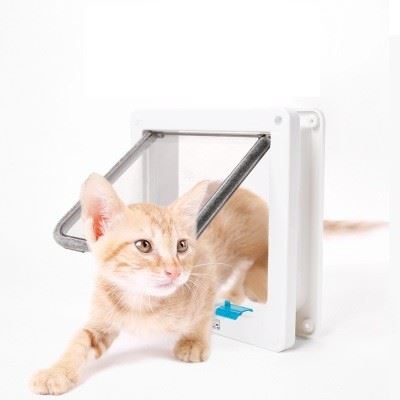
ABS cat door dog door opening free access to Pet door cat and dog kennel pet supplies
Read More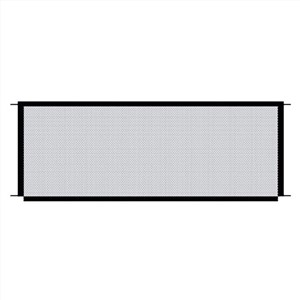
Pet dog fence nylon collapsible dog mesh safety fence for cats and dogs free of holes pet supplies
Read More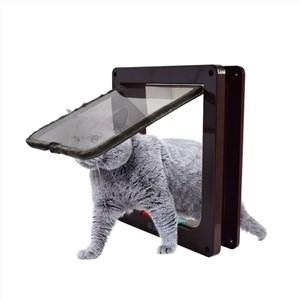
Popular pet supplies cat door cat door dog door can control the direction of the pet door cat kennel
Read More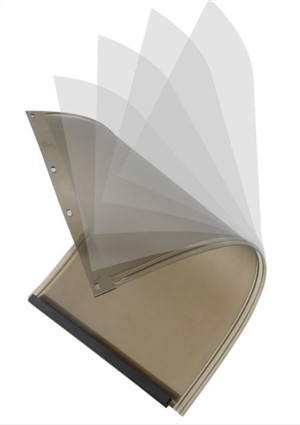
Pet dog door piece Door-piece dog in and out door-hole Soft door-piece free entry
Read More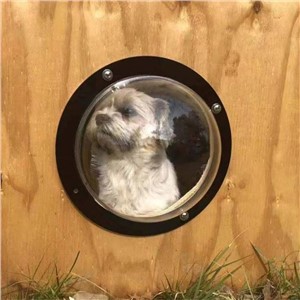
Pet window Special fence window for cats and dogs Pet cat door transparent semicircle acrylic fence window
Read More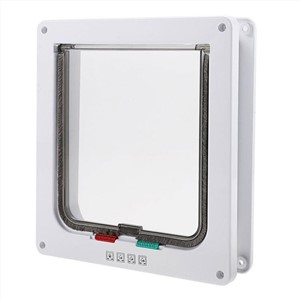
Cross border pet supplies Cat door and dog door can control free access to the pet door cat kennel cat supplies
Read More